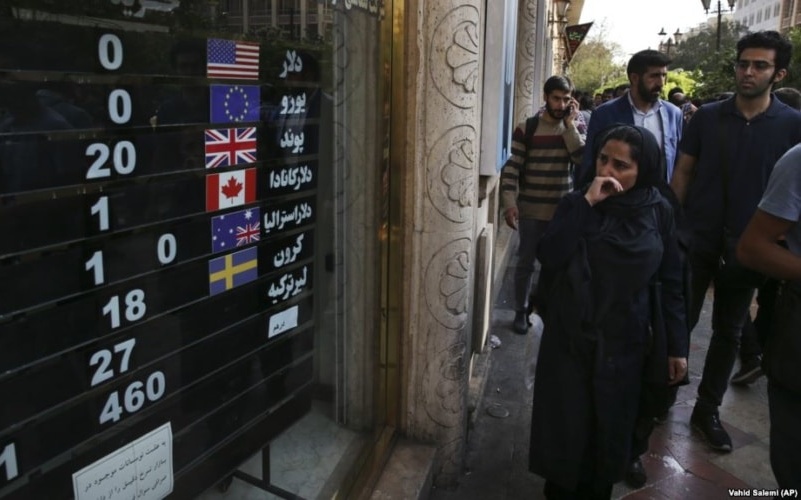Iranians in front of a currency office in Tehran (Vahid Salemi/AP)
Iran’s currency has fallen by more than 15% amid mass protests sparked by a sharp rise in petrol prices.
The rial is trading on the free market at 131,500:1 v. the US dollar, compared to 112,000:1 in late October and 117,400 on November 15, when the Government suddenly announced an increase of 50% to 200% in petrol costs with the slashing of subsidies.
The official exchange is 42,000:1, but the rial was last at that rate in January 2018 — already a historic low against the US dollar — before a collapse during the year to 190,000:1. Inflation, which had been in single digits, spiked to more than 40%
Government intervention, defying comprehensive US sanctions, pegged the rial at about 110,000:1 at the start of 2019 and had been able to hold that rate since August.
The Government is facing pressure on its budget, due to be presented to Parliament this week, because of a fall of between 80% and 95% in official oil sales. Senior official Mohammad Baqer Nobakht said oil revenues will account for only 7% of the budget — compared to about 33% in its predecessors — raising the question of how the Government will cover its spending.
The petrol subsidy, announced at midnight, was meant to raise some revenue. However, it was immediately met by protests across Iran. In the next three days, at least 208 demonstrators were killed, according to Amnesty International, who say the actual toll may be far higher.
More than 7,000 protesters were arrested. Iranian authorities said hundreds of banks — targeted over anger about corruption and lost savings — and Government buildings were burnt.
See also Iran Daily, Dec 5: The Regime’s Carrot-and-Stick with Protesters
Government officials have offered no response to the falling rate. Currency markets are closed on Friday.

